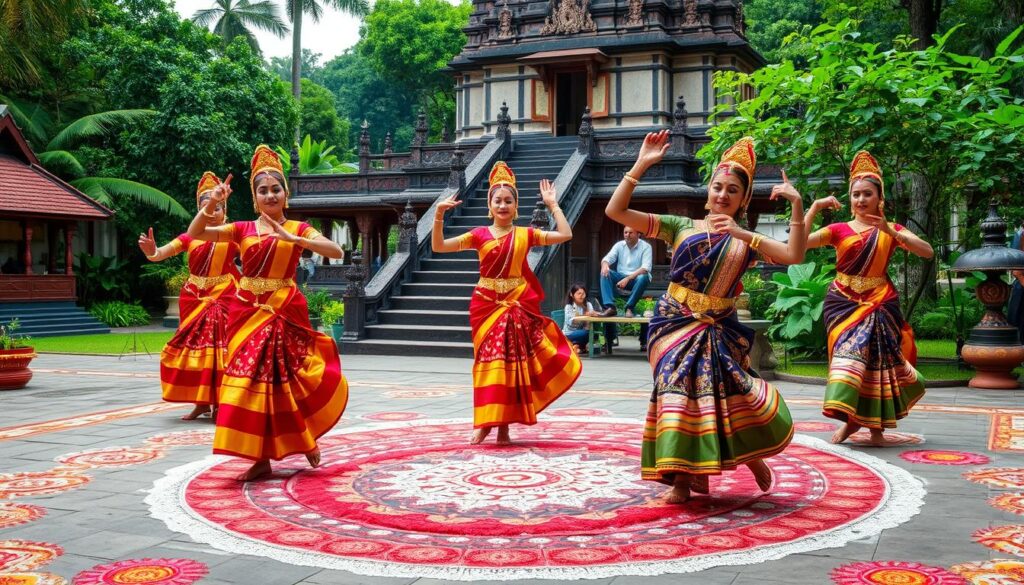Australia to Play Both Tests Against Sri Lanka in Galle 2025
Sri Lanka is excited to host the Australian Men’s cricket team for two matches. These games are major events in the cricket calendar 2025. They are crucial for the World Test Championship 2023-25. The two Tests will happen one after the other. Australia will play both Tests against Sri Lanka in early 2025. The first Test is from January 29–February 2, and the second Test is from February 6–10. Both will be at the famous Galle stadium.
The Australian team is currently in a strong second place with a 62.5 percent points percentage. Sri Lanka is not far behind them. These matches are very important for the journey to the WTC final at Lord’s. Fans will also enjoy a single ODI on February 13. This ODI is set to be a big part of international test matches. For more on how the teams are preparing, see OMP Sri Lanka’s official site. Check out Australia’s squad considerations for the tour.
Key Takeaways
- Australia’s tour includes two pivotal Tests contributing to their World Test Championship rankings.
- The matches will transpire in the historic Galle stadium, renowned for its cricketing legacy.
- The outcome of the series could be a turning point for Australia’s and Sri Lanka’s standings in international cricket.
- As strategizing begins, potential changes in the squad composition, like the inclusion of Glenn Maxwell, are being considered.
- Further scheduling details and squad announcements are highly anticipated ahead of the January 2025 arrival of the Australian team.
The Significance of the Galle Stadium in International Cricket
The Galle International Stadium is more than a sports center; it’s a symbol of pride in cricket. Hosting key international test matches, it brings a unique challenge with its spin-friendly pitches. These showcase the typical conditions of the subcontinent.
Galle as a Historical Venue for Cricket
Galle Stadium has a rich history marked by memorable cricket events. It has seen historical wins and cricketers’ key achievements. Its scenic setting by the Indian Ocean adds to its fame. After the 2004 tsunami, its rebuild showed the stadium’s resilience and importance in Sri Lanka.
A Review of Previous Australia vs. Sri Lanka Matches in Galle
Looking back at matches between Australia and Sri Lanka here reveals thrilling moments. Most games were intense, often favoring the home team. This added complexity for the visitors and spiced up the rivalry between the nations.
Impact of Subcontinental Conditions on the Game
Subcontinental conditions at Galle Stadium greatly influence the game. With its late spin and changing bounce, players’ skills come to the forefront. Teams need to understand these aspects to excel in subcontinental cricket.
The 2025 test series will further showcase evolving strategies on this pitch. Teams will have to adjust to the bounce and spin. Galle stadium continues to be a landmark for thrilling test matches.
Australia to Play Both Tests Against Sri Lanka in Galle in Early 2025
The Australian cricket team is headed to Galle to play two crucial matches against Sri Lanka. These games are big deals in the cricket calendar 2025, taking place from January 29-February 2, and February 6-10. There’s also a key one-day international match on February 13. This ODI is super important for the Champions Trophy campaigns. With Australia in second place in the ICC World Test Championship 2023-2025, they’re looking to stay on top.
Interesting things are happening, like Glenn Maxwell might play Test cricket again after being away since 2017. Sri Lanka, in third place, is using their home advantage to climb up. But Australia will miss players like Cameron Green and maybe Pat Cummins. Maxwell’s skills against spin will be crucial for the team’s success under coach McDonald’s guidance.
The Australian team lands in Sri Lanka on January 20th for a big showdown. Their last Test series in 2022 ended in a tie, making these matches even more exciting. It’s all about chasing championship glory. For those interested in how cricket ties to Sri Lanka’s national plans, check out OMP Sri Lanka.
